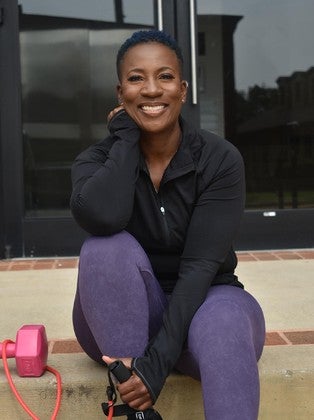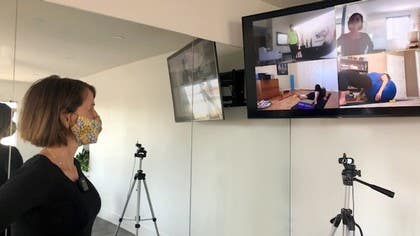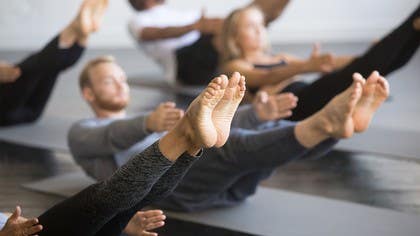
I'm a Certified Pilates Teacher, Now What?
In the current environment in which everyone is “extremely online,” your Pilates business might look different from what it might have looked like only two years ago. There are so many pieces of the puzzle: creating a website, joining professional organizations, obtaining liability insurance, deciding on who you’ll teach, and where, just to name a few.
That’s a lot to consider. Where to start?
According to Matthew Comer, seasoned Pilates instructor and master trainer based in Miami, Florida, “The first step is to ‘cut your teeth’ and see as many bodies as you can.” The more bodies you work with, the faster you’ll be able to spot when someone is out of alignment, and you will be more skilled at choosing the exercises and giving cues that can help the client get back into alignment.
So how do you get your eyes on those bodies, especially when you’re just starting out? Where are the people you want to teach and what type of access do you have to them?
Consider these questions (and remember that you don’t need to answer them all right away. They are simply food for thought to help you envision your ideal Pilates teaching career):
- What’s your access? Knowing what equipment and space you have access to will help you determine the “who, what, where, and when” of your offerings?
- Do you own a Reformer or any of the other pieces of apparatus?
- Do you plan to open your own studio, teach at a studio as an employee, rent space from a studio and be an independent contractor, teach in community centers and/or gyms, teach in your home, or offer training online?
- Who do you want to teach? Do you have an interest in a specific population? Would you like to train moms, seniors, weekend warriors, people with back pain, athletes, dancers? Where are the people in this specific population spending their time? Nursing homes? After-school programs? Gyms? Dance studios? Chiropractic clinics? Church? Community centers? And who do you know that could help you make connections in these places?
With this clarity, the next question is how do you get eyes on you and show potential clients or employers what you have to offer? At one time, the only way to promote yourself as a teacher was through an apprenticeship at the studio where you trained. Now, with social media and the emergence of more online offerings due to COVID-19, Pilates teachers have more options to market themselves.
Some good questions to ask yourself include:
- Do you have a social media presence and how do you use it? If you search the hashtag #Pilates, you will find a plethora of offerings by seasoned and new Pilates instructors. People are using Tik Tok, Instagram Live, Facebook groups and YouTube to not only highlight their skills and qualifications but also to share information specific to the population they want to reach. Which one are you good at right now (grab the low-hanging fruit!) or which one are you most interested in learning first? Follow instructors who seem to have really good engagement with your target market and follow their lead. Make your social media handles consistent across all platforms as it’s easier to get people to follow you on Instagram and Facebook if you use the same name. Brand recognition is key.
- Do you have a website? A website does not have to be elaborate, but it is a good idea to have one. This is a place where you can explain who you are and what you do, as well as provide testimonials, which go a long way towards establishing credibility. A personal website is another way for people to get in contact with you, especially those who don’t use social media.
- Do you have a mailing list? While this can seem like a daunting task, a mailing list will stay with you even if the social media algorithms are not working in your favor or if, heaven forbid, social media shuts down tomorrow. You can put yourself right in the inboxes of people who were interested enough to sign up for your mailing list. Your list could initially be just your friends and close family, but if you collect emails every time you teach a class, you’ll build your list quickly.
Keep in mind that not all of these things (creating a mailing list, developing a personal website) have to happen right away. Remember also that once you start teaching, you may discover who your niche audience/client is and it might be different than what you thought it would be.
Finally, don’t forget to take care of the “housekeeping” that is required when you begin teaching:
- Obtain liability insurance no matter where you are teaching. It is possible that you will be covered if you work as an employee, but it is still a great idea to get your own and a necessity if you are not covered by an employer. There is also liability when teaching online. If you know that online teaching is what you plan to do right now, seek out insurance that is specifically for virtual training.
- Decide if you want to take the National Certified Pilates Teacher exam. This certification is considered the “gold standard” of Pilates certifications, but there are many highly qualified teachers and studio owners who have not taken the exam and robust careers and sterling reputations. Ask around in your Pilates community and weigh the costs and benefits to getting this national certification.
- Decide if you would like to be a part of any Pilates organizations such as the Pilates Method Alliance, the Global Pilates Organization or The Pilates Initiative. Each organization offers something different. Do some research to discover which organization resonates with you and which one you want to support with your money, as well as which organization would best support you in your endeavors as you begin your Pilates teaching career.
- Connect with other seasoned instructors. Take classes with them. Observe them as they work with clients. Talk to them. Allow this to not only be a part of your personal practice time but a space to continue learning and honing your skills.
As a new teacher there will always be another step to take, whether it’s additional training or investing in additional equipment. Growing your business is a process and it takes time.Remember why you wanted to learn and share this work and let that lead you. When you are grounded in your why, the work will come. Enjoy the journey.
There is a place for you in the world of Pilates. Welcome!
Comments
You need to be a subscriber to post a comment.
Please Log In or Create an Account to start your free trial.


















